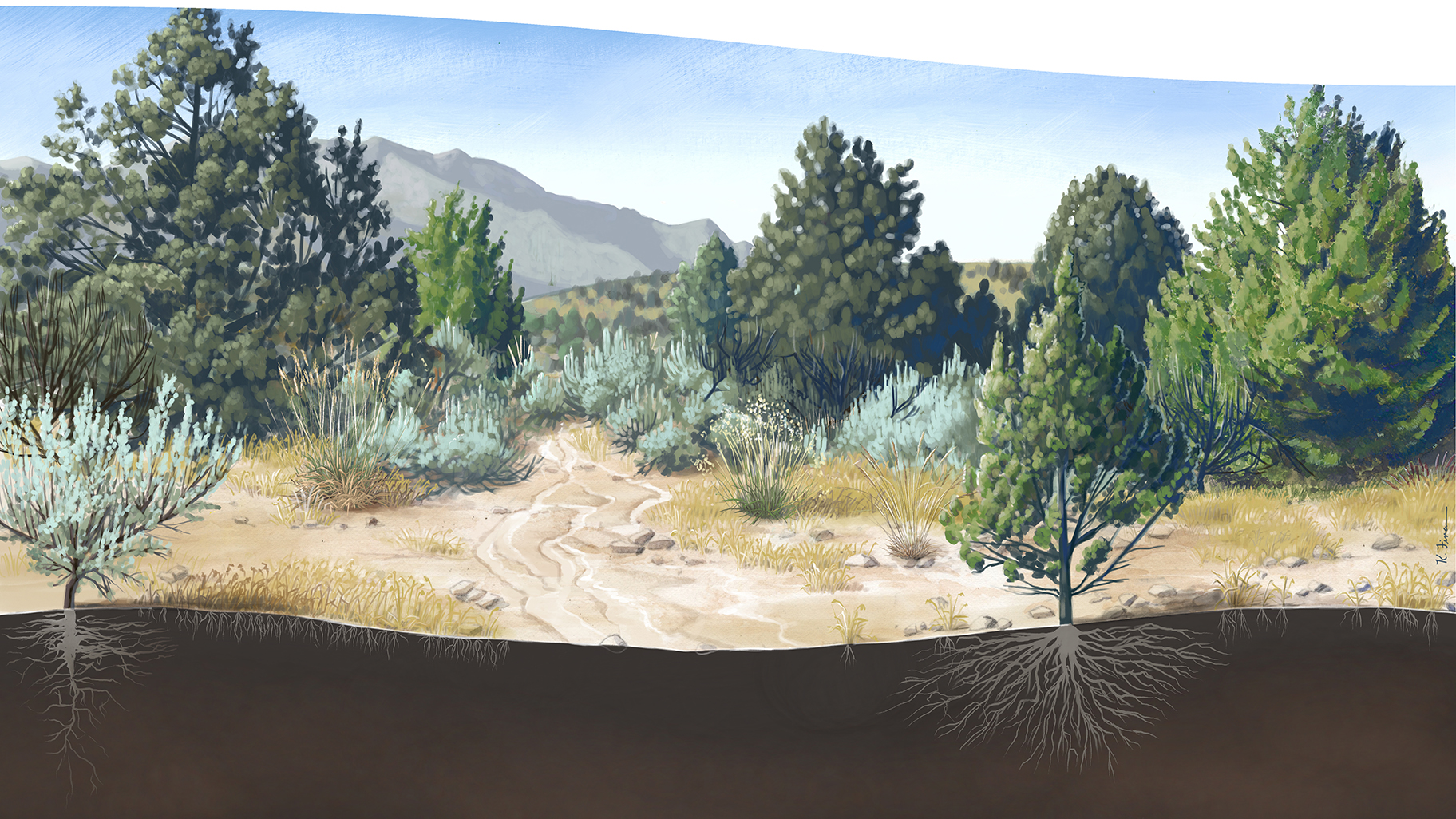
Forage
Healthy shrublands provide critical forage for livestock and wildlife. Perennial grasses and forbs make for productive grazing lands that support the livelihood of rural communities.
Sagebrush Habitat
Many animal species need sagebrush rangeland for habitat. Some wildlife, such as the greater sage-grouse are completely dependent on the shrubs and herbaceous plants in these ecosystems for food and cover.
High Diversity
A high diversity of native shrubs, grasses, and forbs grow in sagebrush ecosystems. Greater plant diversity can result in an ecosystem more resilient to pests and disturbances, including the invasion of non-native species.
Belowground Carbon
Healthy populations of shrubs, grasses, and forbs lead to expansive root systems. This belowground network sequesters carbon that is protected from loss by disturbances such as fire.

Tree Cover
Under encroachment of pinyon-juniper woodlands, trees begin to grow in sagebrush shrublands. Increasing tree cover alters habitat and food sources for animals which results in a decline of many wildlife populations.
Low Diversity
Trees outcompete shrubs, grasses, and forbs for water, sunlight, and nutrients. This competition leads to lower diversity of shrubs, grasses, and forbs and decreased resilience to disturbances.
Invasive grasses
A decrease in cover of native shrubs, grasses, and forbs from pinyon-juniper encroachment reduces resistance to invasion of non-native annual grasses. With fewer native species to compete with invasive species, there can be an abundance of non-native grasses, such as cheatgrass.
Soil Erosion
Greater tree cover reduces understory vegetation and leads to larger patches of bare ground. Increases in bare ground connectivity cause higher water runoff and soil erosion.
Aboveground Carbon
With a conversion from shrubland to woodland there is a greater ratio of carbon sequestered above ground than below. These large aboveground carbon pools are susceptible to loss by fire, releasing sequestered carbon into the atmosphere.